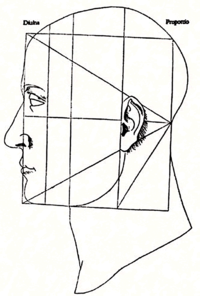Chin augmentation
Chin augmentation is a surgical procedure designed to increase the prominence of the chin. Although this operation is usually done for cosmetic reasons, it is also performed for the reconstruction of the face because of a birth defect or trauma. Deficiency in the size of the chin can cause a marked alteration in countenance, since the mid-point of the lower face so strongly influences the overall appearance of both the face and neck.
Like the nose, and the rest of the jaw, the human chin shows sexual dimorphism. That term means that two different forms exist according to gender, male and female, and the proportions of the chin do differ in women and men.
The surgical procedures to change the form of the chin are called mentoplasty, and include more than simple augmentation. Some mentoplasty procedures result in reduction of the chin, and others in lengthening or otherwise changing shape and proportions. Changes in the shape of the bone structure of the chin are made by making cuts in the bone of the jaw and sliding the pieces into a desired placement. As long as the bone retains a good blood supply and resists infection, the jaw will heal into the new form.
Augmentation of the chin can be brought about by the placement of a synthetic material or tissue graft under the soft tisues of the chin, by making the bone cuts called mandiblar osteotomies and advancing them forward to create more chin projection, or by some combination of procedures, like using both osteotomies and implants.
Evaluation of the chin
Would a particular face benefit in appearance from chin augmentation? Answering that question requires assessing the area of the chin in relation to the lips, teeth, nose, jaw and neck in all three planes: vertical, horizontal, and transverse. A receding chin is deficient in a horizontal plane, but may actually be excessive (very tall) in a vertical plane. In complex cases like that, a good result may require both a vertical reduction and a horizontal augmentation.
Types of chin augmentation procedures
Implant
Synthetic
Synthetic implants are commercially available to surgeons in a limited array of various shapes and sizes. They are made out of both solid and semi-solid materials.
Most often, an incision is made either in the mouth, or under the chin. Every incision will cause a scar, but the placement of the incision is chosen so that the surgeon has needed access, and the well-healed scar is likely to be camoflauged. In this case it is either at the base of the inner lip, or in the skin crease already present under the chin.
The muscle that covers the bony chin is called the mentalis muscle. This muscle is usually divided so that the implant can be placed beneath it, and then the mentalis muscle is rejoined so that its bulk helps position and cushion the new implant.
Tissue grafts
Performed in conjunction with other cosmetic surgery
Although a change in the dimensions of the chin can markedly alter the appearance for the better in many people, it is only rarely that patients consult cosmetic surgeons to request a change in that particular feature."More commonly, requests focus on seemingly more obvious problems, such as reduction of a large nose or correction of sagging skin of the neck and jowls"(reference for quote:Jonathan M. Sykes,Travis T. Tollefson, John L. Frodel Jr.:Chapter 34 – MENTOPLASTY AND FACIAL IMPLANTS Chapter in Cummings: Otolaryngology: Head & Neck Surgery, 4th ed., Copyright © 2005 Mosby, Inc.)
Rhinoplasty
Face lift
When there is excessive lax soft tissue of the lower face from aging or other factors, the chin can be affected. The soft tissues of the chin can sag below the level of the bony jaw.
Reconstructive Chin Augmentation
Gunshot wounds
